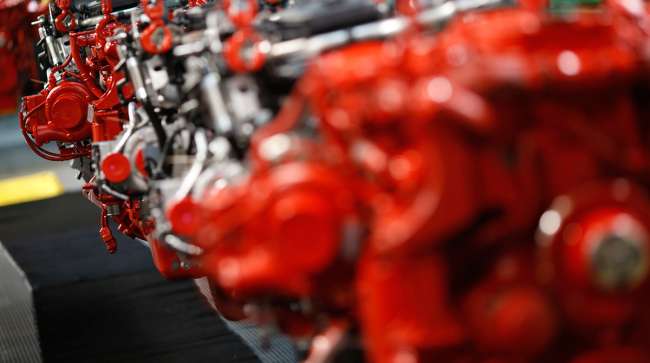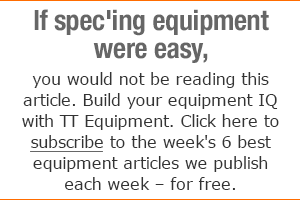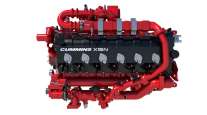Senior Reporter
Tax Reform Affects Profits as Cummins Reports Record Revenue in 2017

Cummins Inc., the only independent engine maker in North America, reported a fourth-quarter loss tied to tax-related charges, though revenue rose. Also, full-year profit fell amid record sales.
For the quarter ended Dec. 31, the company posted a net loss of $274 million, or $1.65 per diluted share — including $777 million in one-time charges related to tax reform as a result of the Tax Cuts and Jobs Act of 2017 that was signed in December. That compares with net income of $378 million, or $2.25, in the same year-ago period.
Excluding the tax-related charge, the company earned $503 million, or $3.03, according to the Columbus, Ind.-based company.
Revenue was $5.5 billion, up 22% from a year ago.
Under the tax law companies can revalue tax-deferred liabilities as of Dec. 31, 2017, to reflect the new 21% federal corporate income tax rate, down from 35%.
For the year, net income slipped to $999 million, or $5.97, from $1.4 billion, or $8.23, a year earlier.
Revenue climbed 17% to a record $20.4 billion compared with $17.5 billion a year earlier.
Cummins cited the growth in international truck production in North America and China, strong demand in its global construction markets and improved demand in mining and oil and gas markets as factors that led to the overall revenue increase.
“We expect demand to remain strong in many of our core markets in 2018 and profitability to improve as a result of higher sales and continued execution of our cost-reduction initiatives,” Chairman and CEO Tom Linebarger said.
Engine business sales in 2017 increased by 15% to $8.9 billion compared with a year earlier due to stronger truck production in North America and global growth in demand for construction equipment.
Full-year revenue for the components segment increased by 22% to $5.9 billion due to stronger truck demand in North America and China as well as the sale of new products to meet the Bharat Stage IV emissions regulation in India that were introduced in April.
The components division includes, among other products, emissions solutions and automated manual transmissions, which contributed $164 million in sales. The new Eaton Cummins Automated Transmission joint venture began operation Aug. 1.
In addition, Cummins forecast capital expenditures this year will rise to between $730 million and $760 million as it continues to invest in new product lines. A year earlier, its capital expenditures were $506 million.
Meanwhile, starting with the first quarter of 2018, Cummins will report the results of its electrification business separately, “so that investors can see the level of investment and understand the pace of development in different commercial vehicle markets over time,” Linebarger said in an earnings call with financial analysts Feb. 6.
Also, Cummins intends to invest about $500 million over the next three years as part of its strategy to develop an electrified powertrain product line along with key component technologies and service and support offerings, he said.
In the meantime, the North American production for heavy-duty trucks is forecast to rise to 266,000 units in 2018, a 20% increase year-over-year. Cummins expects its market share to be between 31% and 34%, he said.
Separately, Cummins named Rob Neitzke as executive director of its on-highway North American original equipment manufacturer business, a key segment of its overall market. Neitzke most recently was the leader of the Cummins Westport joint venture, which designs, builds and sells natural-gas engines.
He succeeds Jeff Caldwell, who is moving to a role ensuring the successful launch of new North American products, according to the Columbus, Ind.-based company.
“Rob brings more than two decades of engineering and leadership experience at Cummins and a track record of success in everything he’s done,” Brett Merritt, executive director of the company’s on-highway business, said in a statement. “I know he’ll bring the same successful approach and focus to this critically important segment of our on-highway business.”





